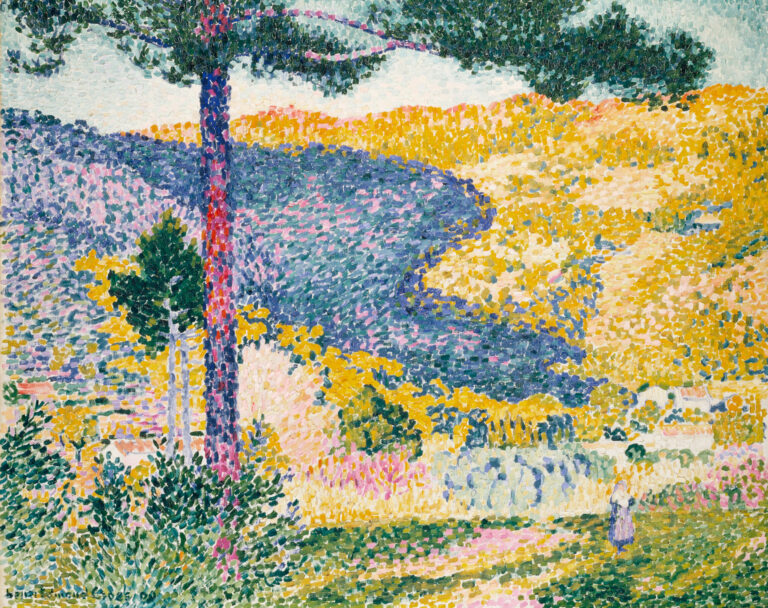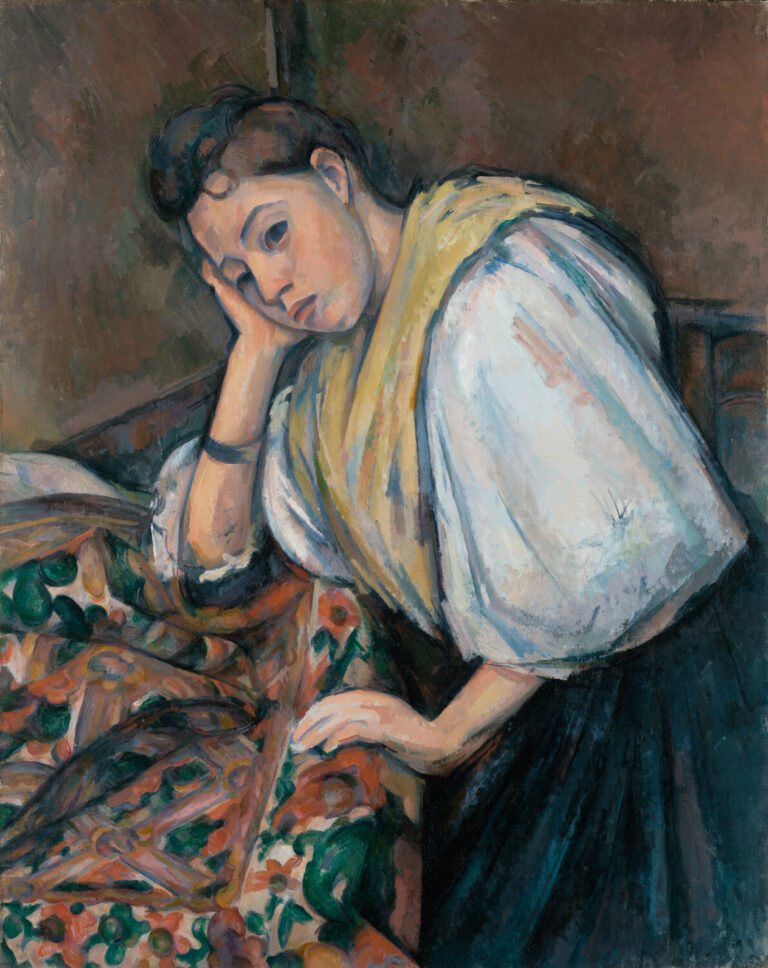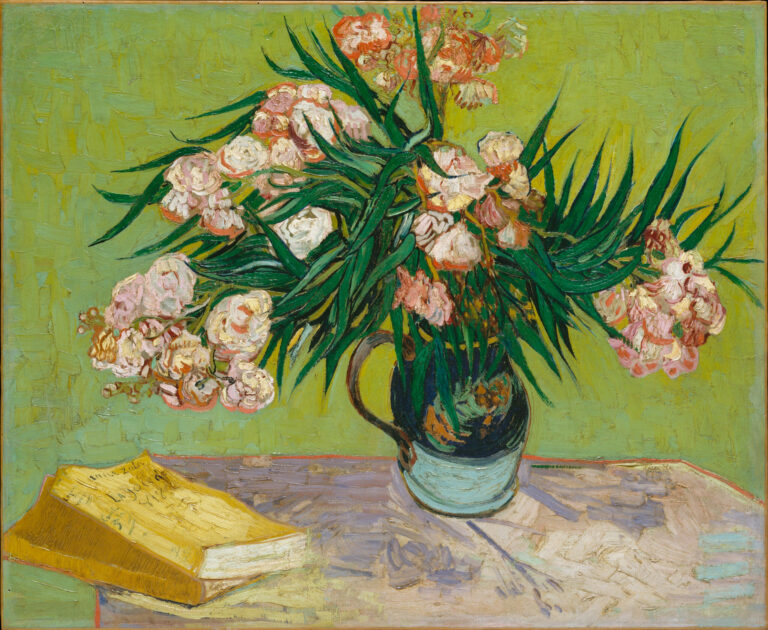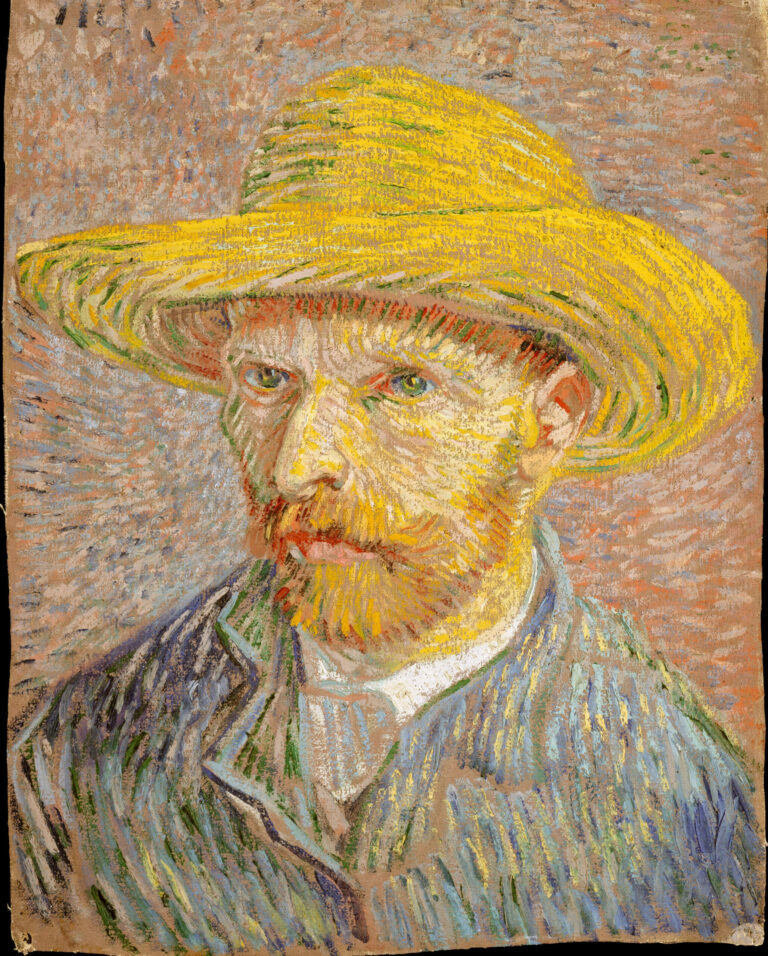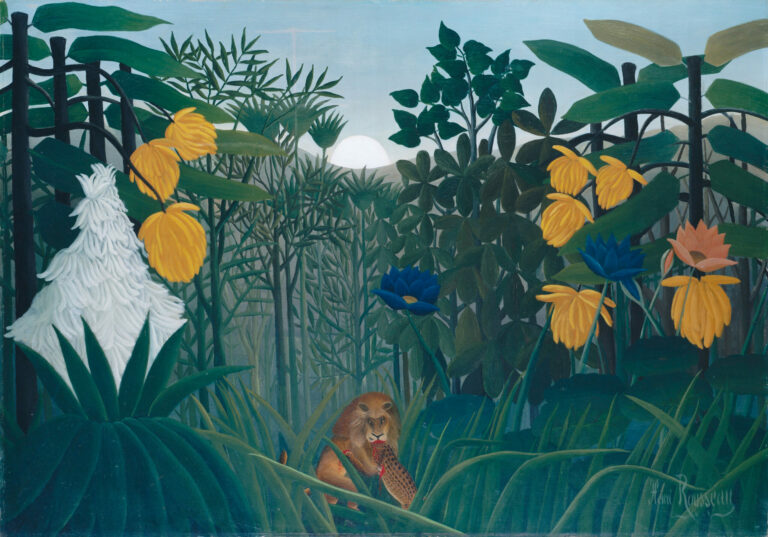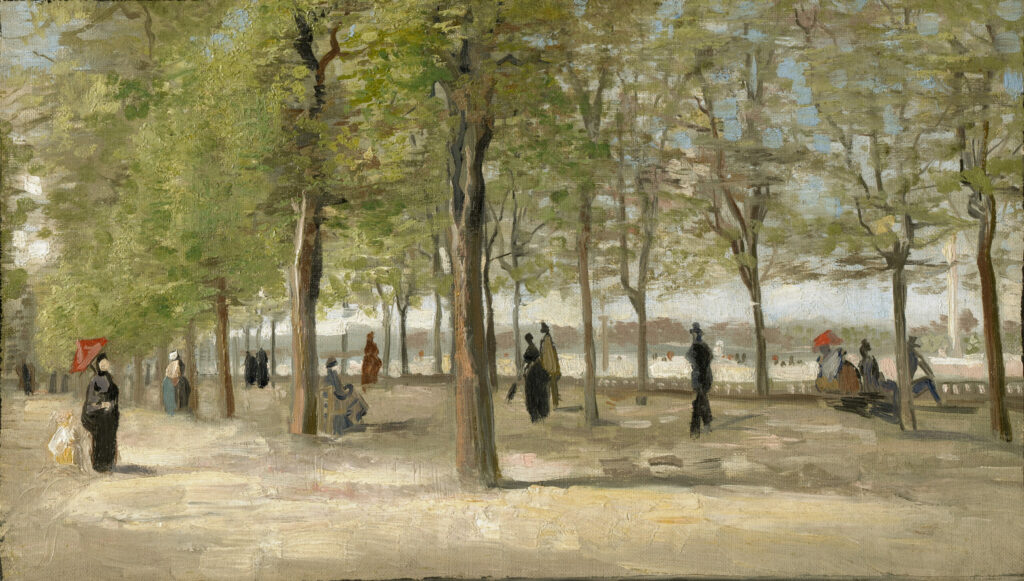
Shortly after settling in Paris, Vincent van Gogh painted “Terrace of the Luxembourg Gardens,” which reflects his discovery of French Impressionism.
Guided by his brother Theo, an art dealer, Van Gogh explored the works of Monet and Pissarro, a revelation that radically transformed his palette and technique. Abandoning the dark tonalities of his Dutch period, the artist here adopts a clearer and more luminous approach.
The composition is organized around the tree-lined terrace where strollers wander. The technique reveals this stylistic transformation: van Gogh experiments with small touches of pure color dear to the Impressionists to capture the play of shadow and light beneath the spring foliage. This work perfectly illustrates the artist’s transitional period, a synthesis between his Northern training and Parisian influences.
Further information
- Vincent van Gogh, Terrace in the Luxembourg Gardens, 1886, oil on canvas. Clark Art Institute, 1955.889
- 10 5/8 x 18 1/8 in. (27 x 46 cm)
- The Clark Art Institute, Williamstown
- https://www.clarkart.edu/ArtPiece/Detail/Terrace-in-the-Luxembourg-Gardens
Vincent van Gogh (1853-1890) went through a crucial formative period during his Parisian sojourn (1886-1888). Living with his brother Theo on rue Lepic in Montmartre, he discovered the French artistic avant-garde that revolutionized his vision. This immersion in the Impressionist and Post-Impressionist milieu, alongside artists like Toulouse-Lautrec, Émile Bernard, and Paul Signac, definitively liberated his palette from the earthy browns of his early work. Parisian public gardens, notably the Luxembourg, became his preferred experimental grounds for assimilating the technical innovations of his contemporaries. This Parisian period, though brief, proved fundamental in the genesis of the unique style that would characterize his later masterpieces. Van Gogh forged there the foundations of his personal pictorial language, blending Impressionist spontaneity with emerging expressivity.

